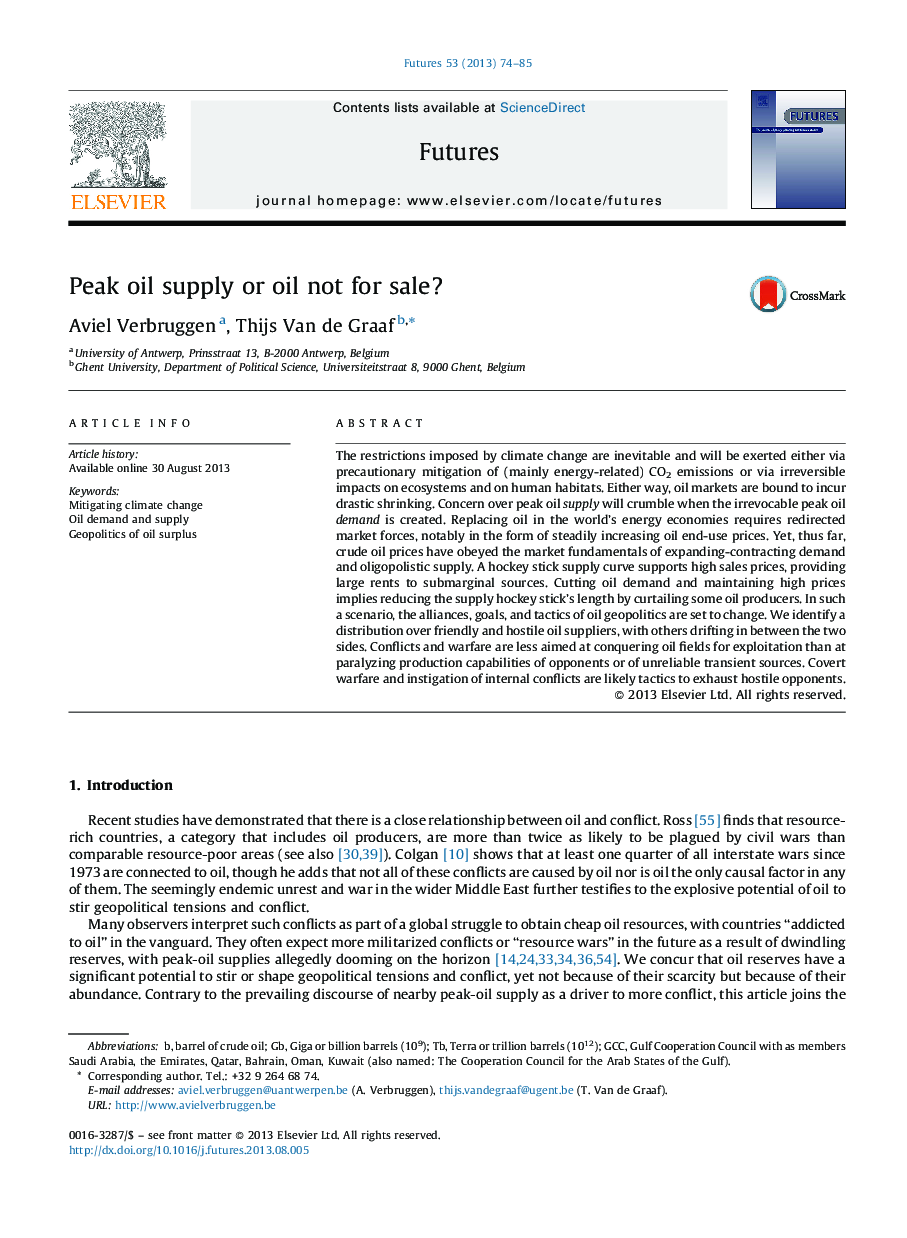| Article ID | Journal | Published Year | Pages | File Type |
|---|---|---|---|---|
| 7424603 | Futures | 2013 | 12 Pages |
Abstract
The restrictions imposed by climate change are inevitable and will be exerted either via precautionary mitigation of (mainly energy-related) CO2 emissions or via irreversible impacts on ecosystems and on human habitats. Either way, oil markets are bound to incur drastic shrinking. Concern over peak oil supply will crumble when the irrevocable peak oil demand is created. Replacing oil in the world's energy economies requires redirected market forces, notably in the form of steadily increasing oil end-use prices. Yet, thus far, crude oil prices have obeyed the market fundamentals of expanding-contracting demand and oligopolistic supply. A hockey stick supply curve supports high sales prices, providing large rents to submarginal sources. Cutting oil demand and maintaining high prices implies reducing the supply hockey stick's length by curtailing some oil producers. In such a scenario, the alliances, goals, and tactics of oil geopolitics are set to change. We identify a distribution over friendly and hostile oil suppliers, with others drifting in between the two sides. Conflicts and warfare are less aimed at conquering oil fields for exploitation than at paralyzing production capabilities of opponents or of unreliable transient sources. Covert warfare and instigation of internal conflicts are likely tactics to exhaust hostile opponents.
Keywords
Related Topics
Social Sciences and Humanities
Business, Management and Accounting
Business and International Management
Authors
Aviel Verbruggen, Thijs Van de Graaf,
